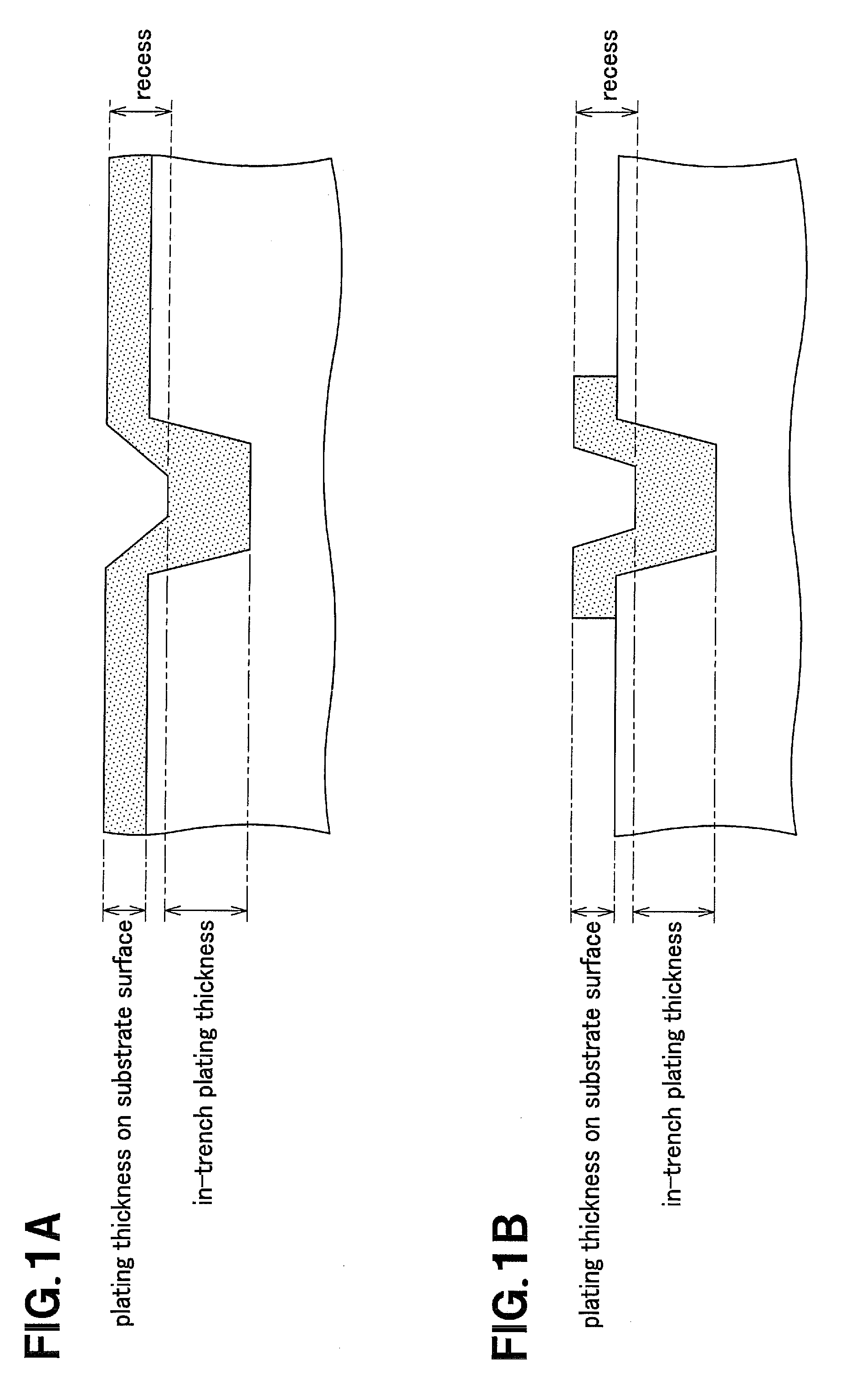Electroless plating solution, method for electroless plating using the same and method for manufacturing circuit board
- Summary
- Abstract
- Description
- Claims
- Application Information
AI Technical Summary
Benefits of technology
Problems solved by technology
Method used
Image
Examples
example 1
[0055]Using a laser working device, manufactured by Hitachi Via Mechanics, Ltd., usable for via opening, a trench of 20 μm in width and 13 μm in depth was formed in a board prepared by applying a general insulating resin (ABF-GX13 manufactured by Ajinomoto Fine-Techno Co., Inc.)
[0056]A catalyst affording process (Thru-Cup process of C. Uyemura & Co., Ltd.: a cleaner conditioner ACL-009, a pre-dip PED-104, catalyst AT-105 and an accelerator AL-106) was then carried out to afford a catalyst (seed layer). Using an electroless copper plating solution, electroless copper plating was carried out for two hours under a temperature condition of 70° C. to fill a trench with plating copper to form a copper plating film. After the plating operation, the filling state of the trench was measured by observing its cross section. The used electroless copper plating solution was of the following composition:
Composition of an Electroless Copper Plating Solution (Example 1)
[0057]copper sulphate: 0.04 m...
example 2
[0064]As in Example 1, a masking tape (851T manufactured by Sumitomo 3M Limited) was applied to a board on which a general insulating resin (ABF-GX13 manufactured by Ajinomoto Fine-Techno Co., Inc.) was formed. The masking tape in its entirety was processed using a laser working device used for via opening (manufactured by Hitachi Via Mechanics, Ltd.) to form a trench of 10 μm in width and 16 μm in depth in the insulating resin.
[0065]A catalyst affording process (Thru-Cup process of C. Uyemura & Co., Ltd.: a cleaner conditioner ACL-009, a pre-dip PED-104, a catalyst AT-105 and an accelerator AL-106) was then carried out to afford a catalyst (seed layer). The masking tape was then removed to afford the catalyst only into the trench.
[0066]Then, electroless copper plating was carried out for two hours under a temperature condition of 60° C. using an electroless copper plating solution, to fill the trench with plating copper to form a copper plating film. After the plating, the filling ...
PUM
| Property | Measurement | Unit |
|---|---|---|
| Mass | aaaaa | aaaaa |
| Mass | aaaaa | aaaaa |
| Concentration | aaaaa | aaaaa |
Abstract
Description
Claims
Application Information
 Login to View More
Login to View More - R&D
- Intellectual Property
- Life Sciences
- Materials
- Tech Scout
- Unparalleled Data Quality
- Higher Quality Content
- 60% Fewer Hallucinations
Browse by: Latest US Patents, China's latest patents, Technical Efficacy Thesaurus, Application Domain, Technology Topic, Popular Technical Reports.
© 2025 PatSnap. All rights reserved.Legal|Privacy policy|Modern Slavery Act Transparency Statement|Sitemap|About US| Contact US: help@patsnap.com


